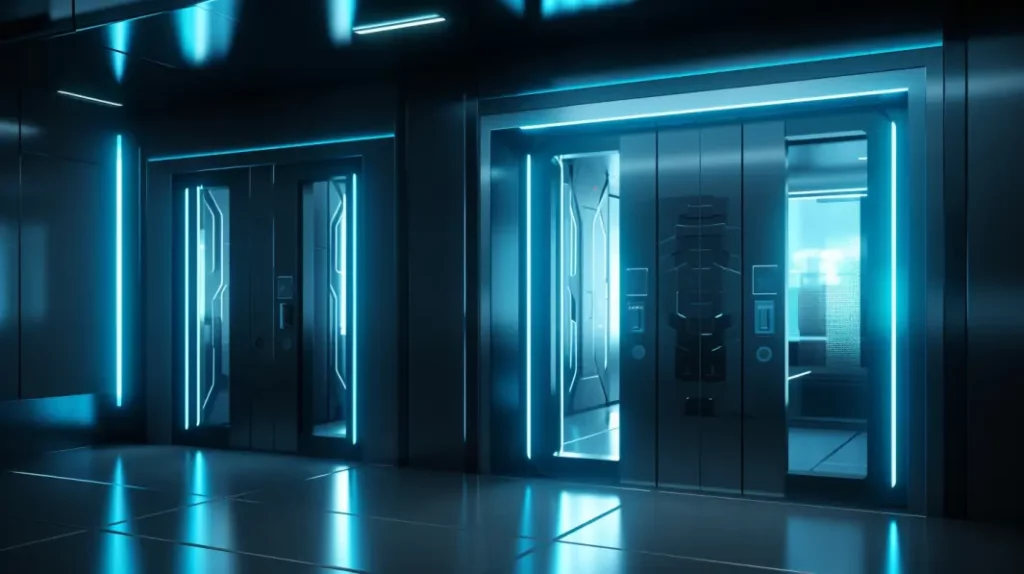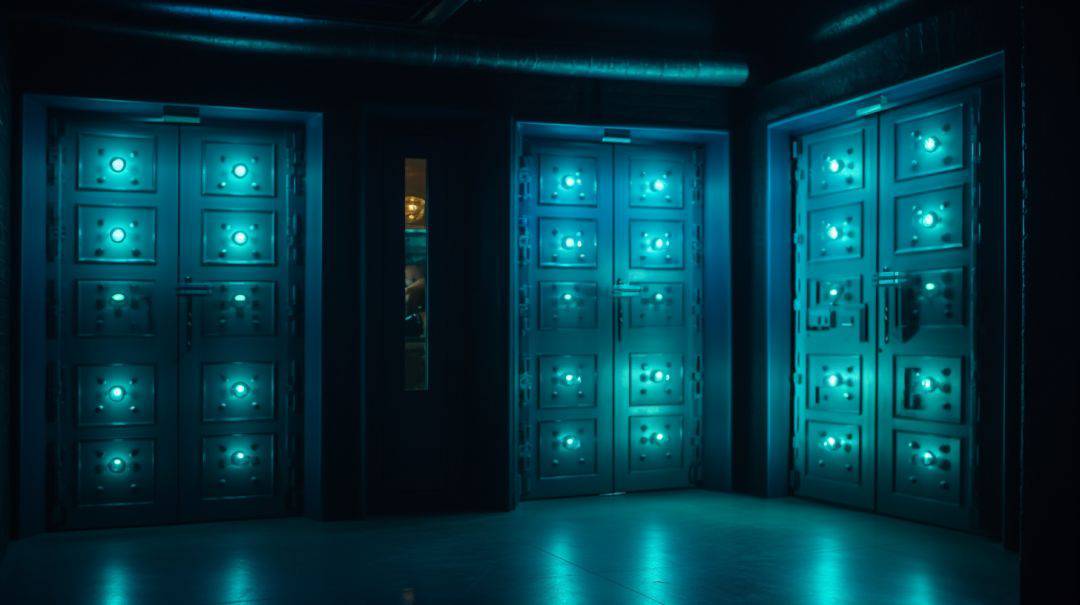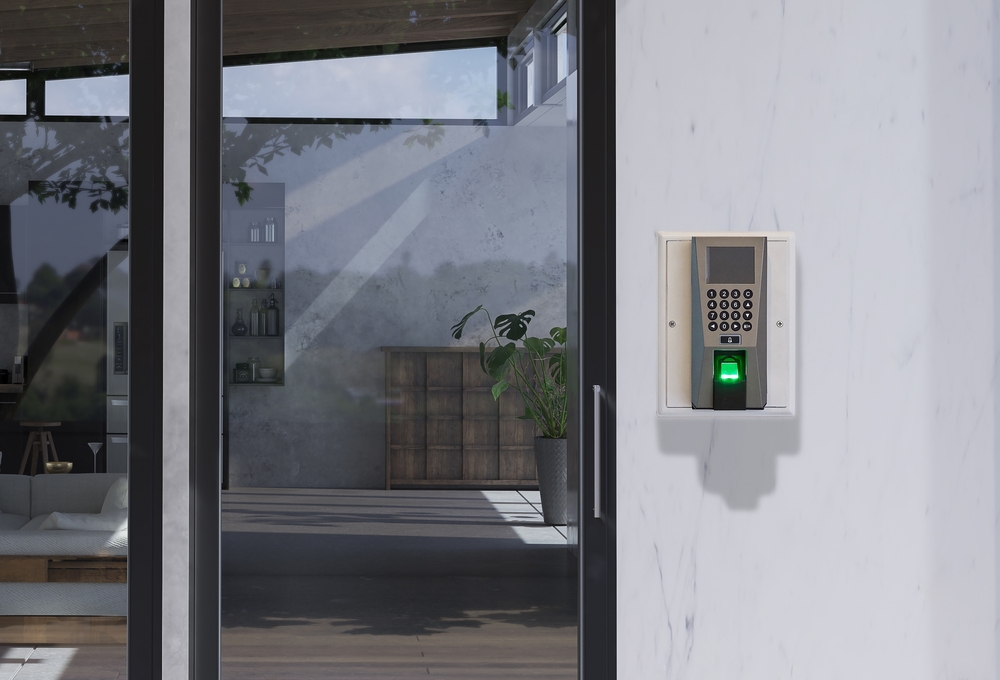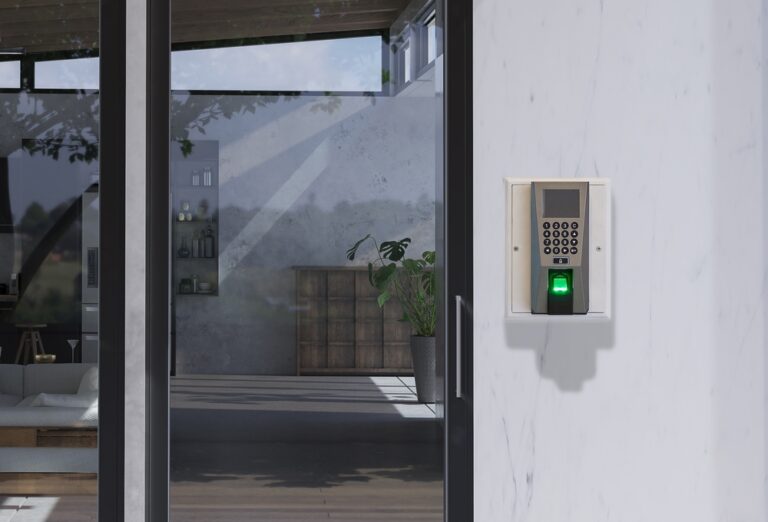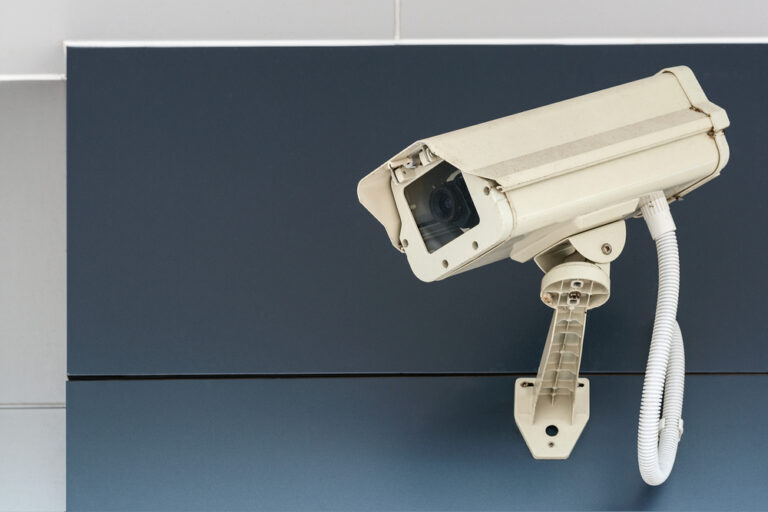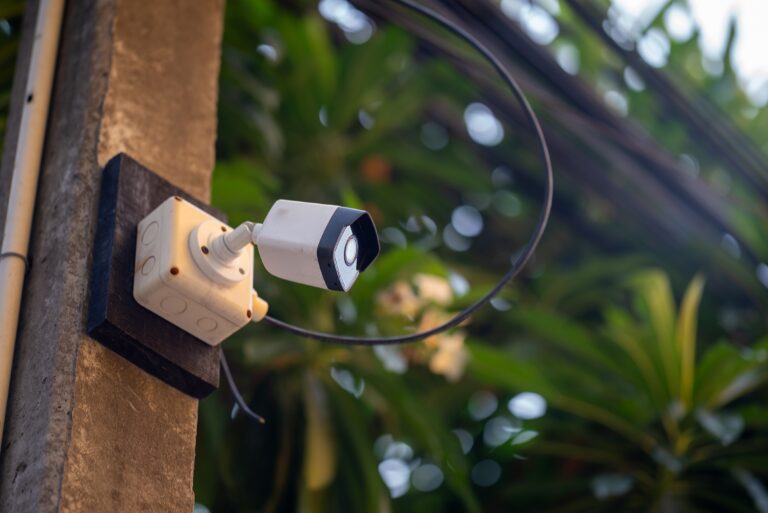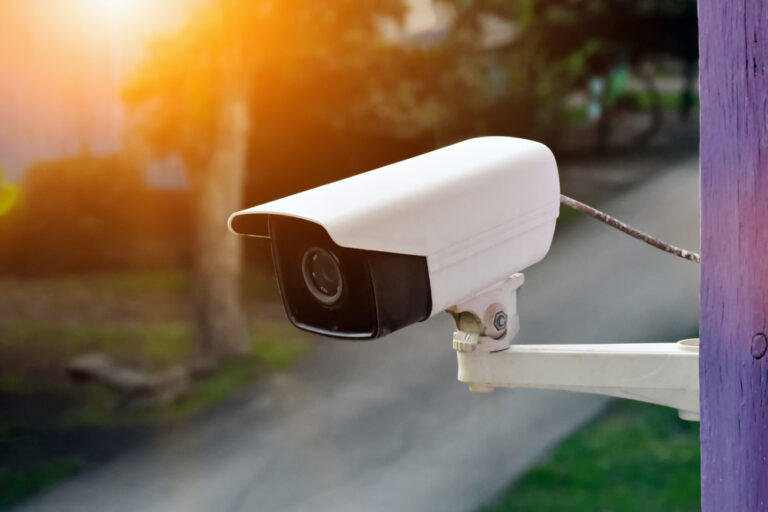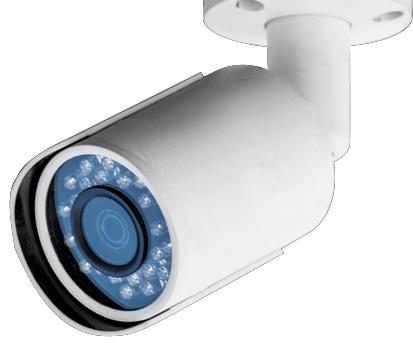- 1) Introduction
- 2) Evolution of Locks: From Keys to Magnetic Locks
- 3) The Benefits of Magnetic Locks for Access Control
- 4) How Magnetic Locks and Card Access Control Work Together
- 5) Types of Magnetic Locks in the Market
- 6) Advantages of Magnetic Locks over Traditional Locks
- 7) Latest Innovations in Magnetic Lock Technology
- 8) Applications of Magnetic Locks in Different Industries
- 9) Choosing the Right Magnetic Lock for Your Needs
- 10) Conclusion: The Future of Access Control with Magnetic Locks
-
11)
FAQs
- 11.1) What are the main types of magnetic locks for access control?
- 11.2) How do I integrate magnetic locks with my existing access control system?
- 11.3) What features should I look for when buying magnetic locks?
- 11.4) Can magnetic locks be unlocked remotely in emergencies?
- 11.5) How long do commercial-grade magnetic locks typically last?
Introduction
Securing entryways is crucial for controlling access to sensitive areas and protecting people and assets. Magnetic locks are revolutionizing access control by offering convenient, yet highly secure locking solutions. As technology continues to advance, magnetic locks are transforming beyond traditional keys by integrating seamlessly with access control systems.
| Key Takeaways | |
|---|---|
| Magnetic locks provide over 1,200 lbs of secure holding force and integrate with systems for advanced capabilities | |
| Frictionless, highly secure access control with mobile credentials replacing vulnerable keys | |
| Centralized management of global or individual user door permissions and schedules | |
| Real-time visibility into door events and instant alert triggering if issues arise | |
| Future-proofscalable access infrastructure with ongoing innovations for intelligent automation |
Magnetic locks rely on electromagnetic force rather than mechanical means to secure doors. They have become incredibly popular over the last decade thanks to their ease of installation, flexibility, and ability to integrate with other security and access control systems. With just a power supply connected, magnetic locks provide reliable access control.
There are various types of magnetic locks available today including electromagnetic locks, electric strikes, magnetic shear locks, and more – all serving unique access control needs. This advanced yet affordable technology is helping commercial buildings, residential communities, government sites, schools and more restrict access like never before.
In this comprehensive guide, we will cover the evolution, benefits, functionality, latest innovations, and applications of magnetic locks. By the end, you’ll have a clear understanding of how magnetic locks are transforming entry control through seamless integration and mobile access. We’ll also provide guidance on how to choose the right magnetic lock system to secure your doors according to your needs.
Evolution of Locks: From Keys to Magnetic Locks
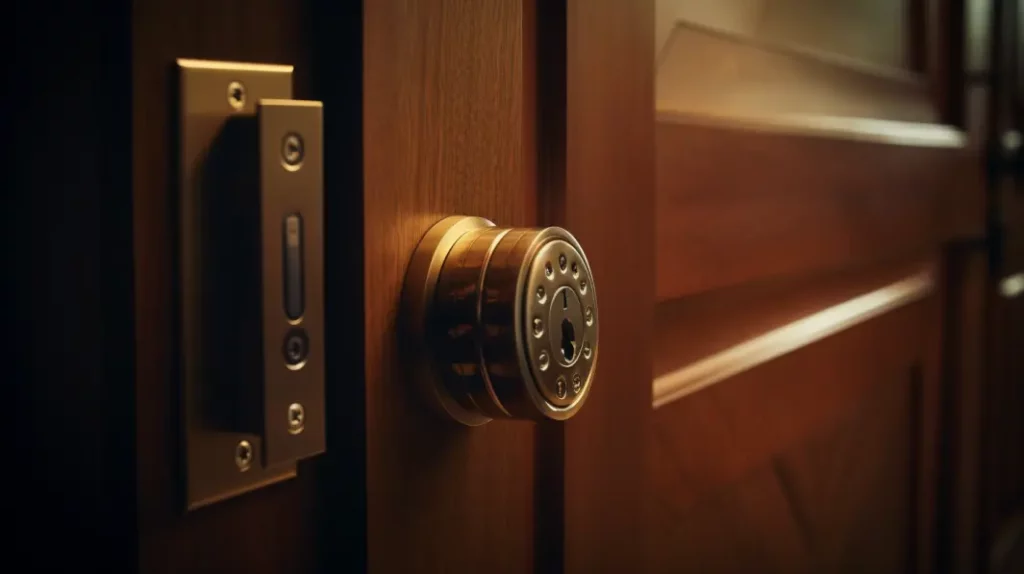
For centuries, mechanical locks and keys were the primary access control method for securing buildings and assets. As one of the oldest security devices, locks have evolved dramatically from primitive contraptions to completely keyless magnetic locking systems today.
In the past, access control relied on physical keys cut to unique profiles that could open corresponding mechanical locks. Managing tons of keys was an operational and security nightmare for facilities with many access points and personnel. Plus, keys could easily be stolen, copied or lost.
The arrival of the electric strike in the 1970s introduced access control beyond physical keys. Electric strikes enabled remote lock control via switches or card readers while keeping egress uncompromised. However, the strikes still operated mechanically, had single points of failure, and offered limited monitoring.
Electromagnetic locks then revolutionized electric locking by using magnetism rather than mechanical components. First patented in 1975, electromagnetic locks contain electromagnets that align to a metal armature plate when energized. This creates a powerful magnetic bond holding doors closed until powered off.
Unlike physical locking devices, magnetic locks have no mechanical parts to fail or compromise security. They can integrate with access control systems for managing permissions, provide real-time remote monitoring and control, and instantly release doors in emergencies.
Within just 30 years, electromagnetic locks have surpassed traditional locking methods. Today, integration with IP-based access control and wireless operation has transformed magnetic locks into intelligent, remotely-managed systems. They enable frictionless, highly secure keyless access to sensitive entryways in facilities worldwide.
The benefits don’t stop there, as we’ll explore magnetic lock functionality, advantages and breakthrough innovations in access control technology.
The Benefits of Magnetic Locks for Access Control
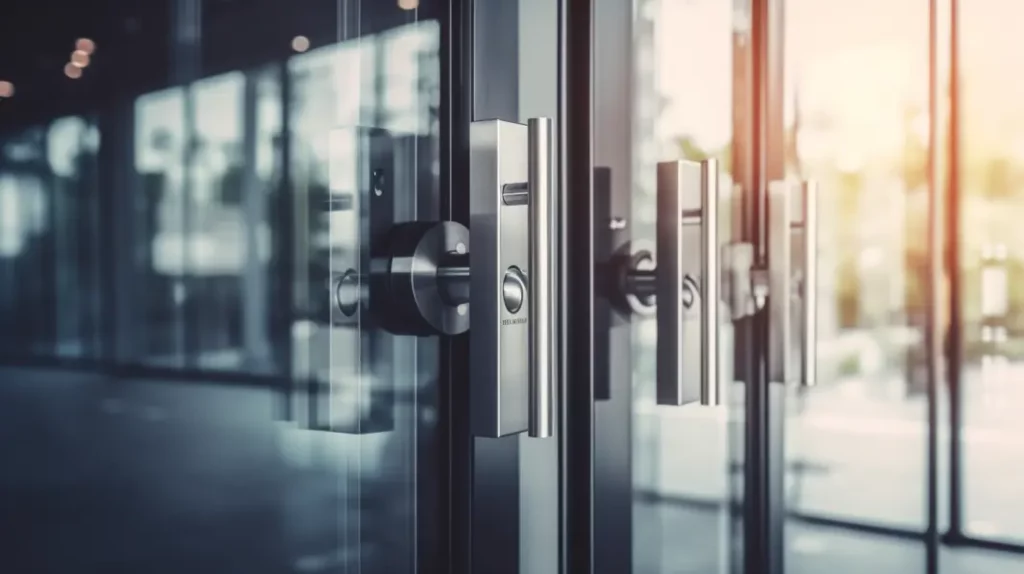
Magnetic locks offer immense advantages over mechanical locks and keys for controlling access through doors. They are extremely secure, convenient to use, and allow centralized monitoring and control. Let’s explore the top benefits further:
Enhanced Security
- Provide over 1,200 lbs of holding force to resist forced entry
- No mechanical components that can wear out or break
- Tamper alerts if compromised or removed
- Integrate with other systems for layered security
Flexible Access Control
- Set unique access permissions for each credential
- Schedule automated lock/unlock according to time and day
- Receive instant notifications if a door is left unlocked
- Lockdown or unlock doors remotely via app
Keyless Convenience
- Users simply present authorized credentials to enter
- Credentials can be PIN codes, cards, biometrics
- Eliminates need to carry, distribute and track keys
Centralized Monitoring & Control
- Remotely monitor door access in real-time
- Respond instantly to security events or issues
- Manage user permissions and access schedules centrally
- Conduct real-time or historical audits easily
With exponential benefits over traditional locking systems, it’s clear why magnetic locks are becoming the gold standard for access control across industries. Facility managers can now track door events, automate access, and quickly respond to incidents – all without keys.
How Magnetic Locks and Card Access Control Work Together
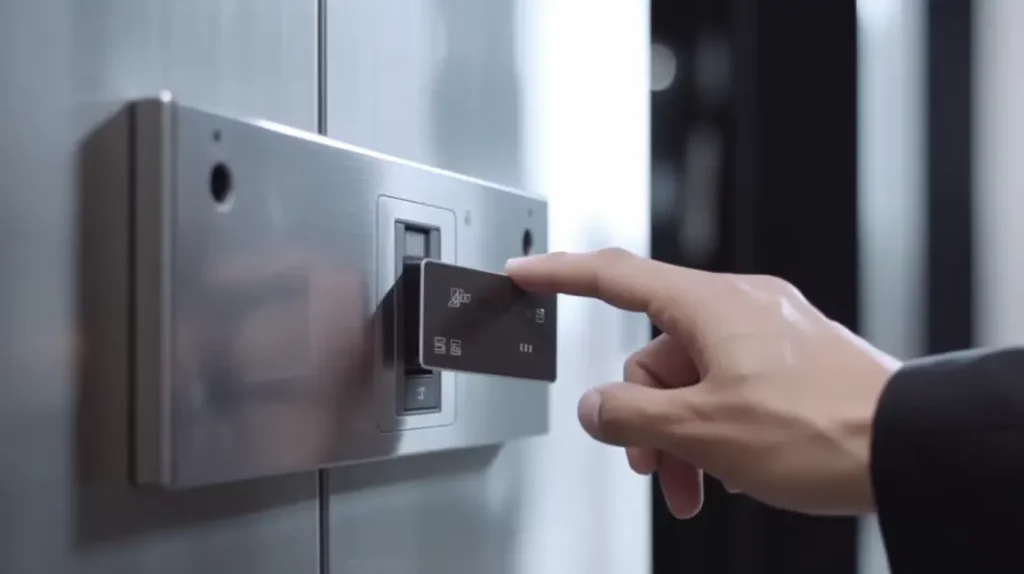
Magnetic locks provide the locking mechanism to secure doors, while card access control systems manage the permissions, credentials, and integration with other security systems. When combined, they create a powerful access control solution that is far superior to keys.
Here is an overview of how magnetic locks and card access systems work together:
Card Credentials
Users are issued credentials like keycards, fobs, or mobile devices enrolled with unique card numbers. Credentials are programmed into the access control system with parameters including:
- Which specific doors the cardholder may access
- Date, time and day restrictions
- Occupancy limits and group permissions
Controller and Card Readers
When a credential is presented to the card reader, the reader sends the card number to the access control system’s controller. The controller cross checks if the cardholder has permission to access the door at that time.
Lock Power Supply
If access is granted, the controller signals the power supply to send electrical current to the magnetic lock, retracting the magnet for a split second so the door can open. Once the door closes, full magnetism instantly re-engages the lock.
Electrified Exit Hardware
Exit door hardware is also electrified so authorized credentials or motion sensors can unlock exit doors to grant entry from secure areas. However electrified hardware keeps exit doors locked from outside entry.
This integration enables advanced capabilities not possible with just stand-alone magnetic locks or card readers. Doors stay securely locked until split-second unlocking when authorized credentials are presented. Facility managers can set permissions, view audits and alter access remotely through integrated access control software.
Types of Magnetic Locks in the Market
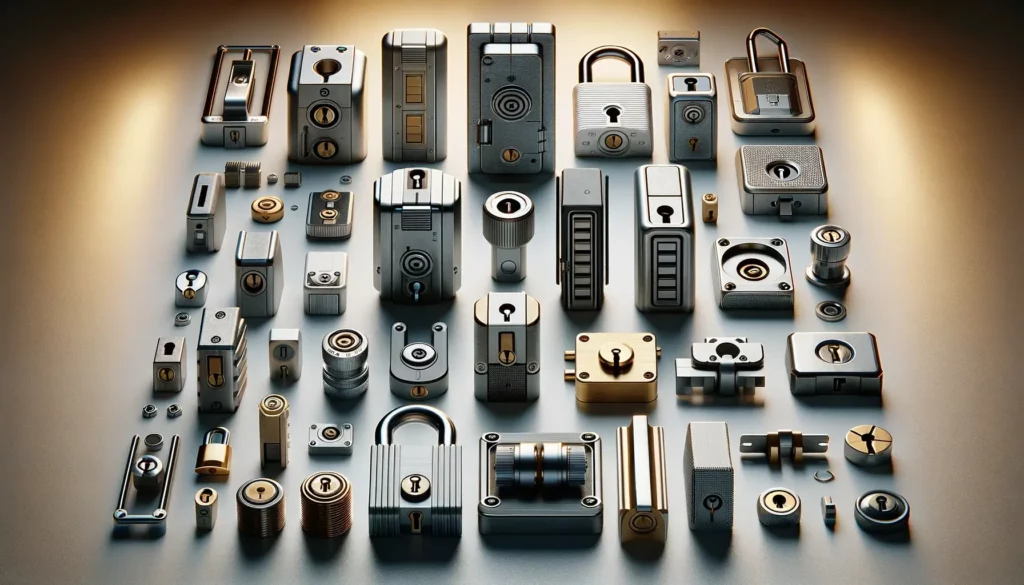
There are several major types of magnetic locks available that serve various access control needs. The most common varieties include:
Electric Strikes
Electric strikes have faceplates that pivot open when energized, allowing the latch to extend and unlock doors. They offer:
- Seamless operation with existing mechanical locks
- Ability to manually unlock doors even if power fails
- Easy installation in place of most existing locksets
However electric strikes may not properly align after many open/close cycles which can prevent locking. Frequent troubleshooting and strike alignment may be needed.
Electromagnetic locks contain an electromagnet portion mounted onto the door frame, which aligns with an armature plate on the door. When energized, the magnet strongly bonds the door closed. Because operation is entirely electronic rather than mechanical, electromagnetic locks are extremely secure and reliable.
Magnetic Shear Locks
Magnetic shear locks use the shearing principle – activating sideways-mounted magnets to lock exit door latches and prevent pushing or pulling doors open. They offer easier installation than surface mounted electromagnetic locks. However shear locks are less secure against prying attacks.
Eco-Friendly Magnetic Locks
Newer “green” magnetic locks reduce power consumption up to 75% by cycling the powered-on lock status. These eco-magnetic locks briefly switch off multiple times per minute without releasing, enabling huge energy savings versus keeping electromagnetic locks constantly energized.
There are also finishing variations of magnetic locks like stainless steel covers and architectural finishes that seamlessly blend into surrounding door frames for discreet installation. This allows retrofitting high-security magnetic locks into existing entries while maintaining aesthetics.
Advantages of Magnetic Locks over Traditional Locks
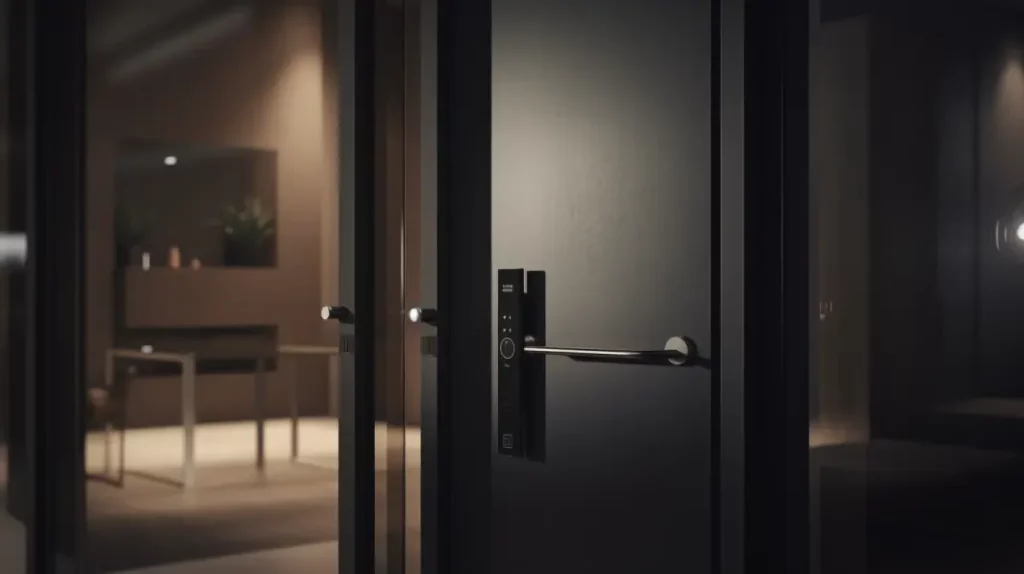
Magnetic locks offer immense advantages compared to traditional mechanical locking systems with physical keys. They are superior across factors such as:
Easy Installation
- Electromagnetic locks involve simple mounting on door frame and header
- Wiring connects to integrated access control and power
- Retrofits into existing entries without replacing doors or frames
- Electric strikes designed for quick replacements of old locks
This enables rapid upgrades to high security with minimal disruption to facilities.
Enhanced Security
- Extreme 1,200+ lbs holding force against entry attempts
- Built-in tamper alerts if compromised
- Allow layered security integration with cameras, alarms etc.
- Remote capability to lock/unlock, alter permissions, full audits
- Evac mechanisms e.g. fire sensors instantly disable locks
Magnetic locks offer far more kickback resistance and security monitoring/control capabilities than mechanical locks prone to picking, drilling or duplication.
Increased Convenience
- Frictionless access just by presenting a card or fob
- Scheduled automatic door unlocking/locking
- No managing distribution of metal keys
- Lost credentials easily disabled; new ones re-activated
- Door prepped for future capabilities e.g mobile access
Facility management enjoys major time savings, while users enter secured doors handsfree. This convenience prompts enterprises worldwide to swap out traditional locks.
Magnetic locking effectively resolves vulnerabilities, security gaps, risks and inconvenience posed for centuries by metal keys. It is a logical access control progression – with innovation still ongoing.
Latest Innovations in Magnetic Lock Technology
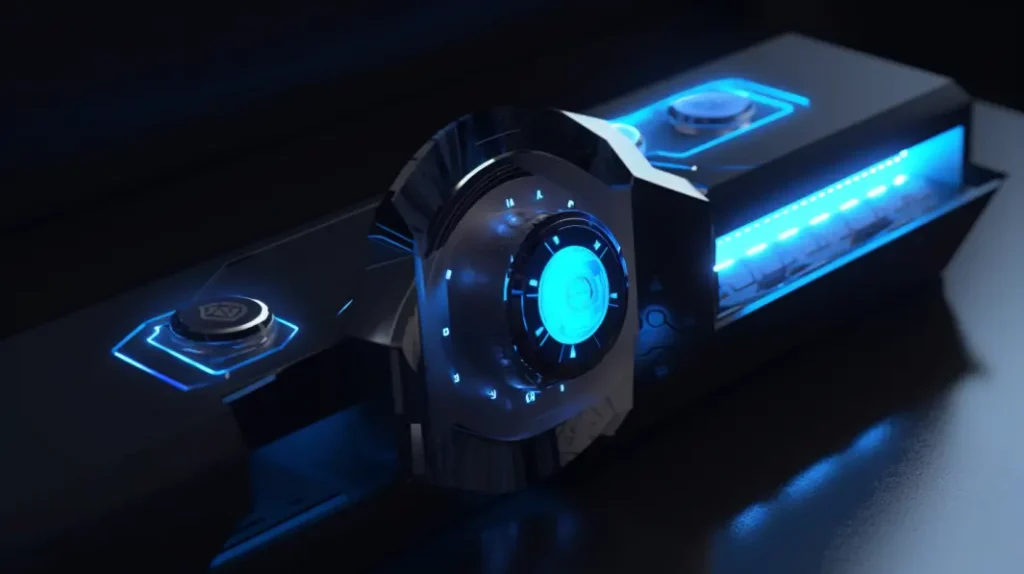
While magnetic locks have transformed access control capabilities, manufacturers continually push boundaries integrating the latest innovations:
Integration with Access Control Systems
- Open architecture magnetic locks readily interface with modern IP-based access control systems using standards like OSDP Secure Channel
- Enables real-time monitoring, instant global lockdowns, managing user permissions from one dashboard, and more
- Allows layered security integration with video surveillance, alarms etc.
- Integrated software apps allow administrators and users to control doors from mobile devices
- Administrators can add/revoke cardholder access, view audit trails, alter permissions and schedules
- Users may remotely unlock doors for visitors via smartphone
Key Card Elimination
- Bluetooth or smartphones replace physical cards, fobs and tags that can get damaged, misplaced or copied
- Users conveniently gain access via smartphones that always stay with them
- Enables advanced capabilities like location-based auto-unlocking
These innovations expand capacities for granular control, detailed visibility, and intelligent automation with magnetic locks for frictionless yet highly secure access. Additional breakthroughs like AI integration continue pushing possibilities ever further.
Applications of Magnetic Locks in Different Industries
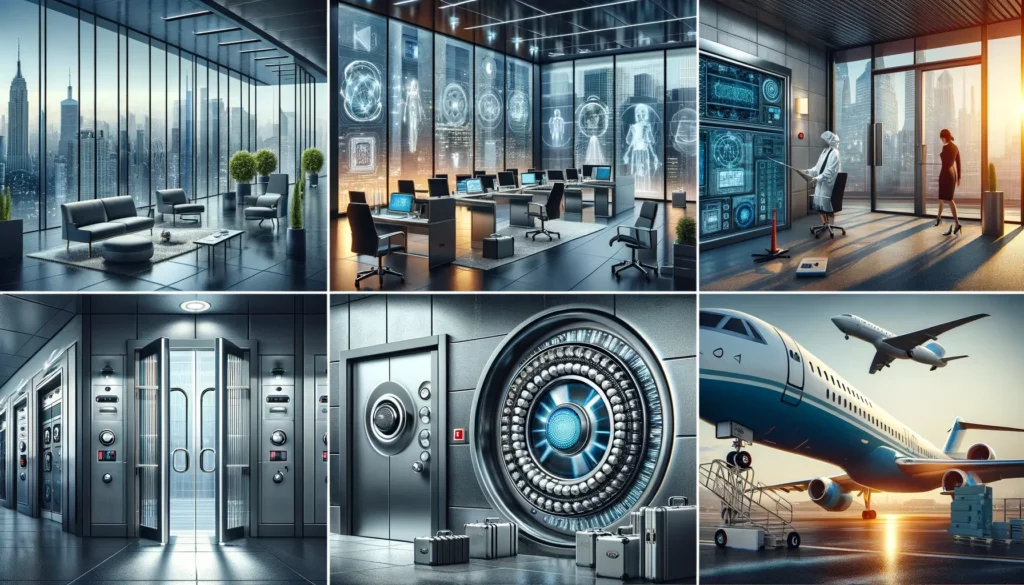
Magnetic locks enable versatile, high security access control across many sensitive facilities. While they originated securing commercial buildings, innovative magnetic lock systems now restrict access in various sectors:
Commercial Buildings
Magnetic locks first gained widespread popularity in the commercial sector securing office towers, manufacturing plants and critical infrastructure sites:
Entry Doors
- Main entryways
- Executive office suite doors
- R&D department entry
- HR personnel files storage
- Server room doors
Interiors
- High-value storage areas
- Equipment and inventory cages
- Control rooms
- Electrical closets
- Roof hatches
Perimeter Gates
- Loading docks
- Parking garages
- Generators and utility buildings
- Fenced storage yards
Electromagnetic locks and integrated access control systems enable managing credentials for hundreds of staff without distributing keys. Facility managers remotely monitor doors, quickly alter access permissions when needed and run detailed audits.
Magnetic locks continue advancing commercial building security while expanding across more industries like government, residential buildings and schools.
Residential Properties
Magnetic locks secure residential communities by controlling access to different zones:
- Main building entries
- Parking garages
- Amenity areas e.g. pool, gym
- Mailroom/package rooms
- Elevator lobbies for floor access
Residents access permitted areas just by scanning a keycard or smartphone, without carrying keys. Property managers grant temporaries access to guests or contractors scheduled for site work. Instant alerts notify staff if a door is left unlocked after hours.
Government Facilities
Highly sensitive government sites employ magnetic locks together with multilayered security measures for protecting personnel and confidential information:
- Public entry screening areas
- Operations facilities
- Sensitive storage rooms
- Communication hubs
- Server closets
Valid credentials must be presented to unlock doors for authorized entry only. Magnetic locks integrate with intrusion detection so forced entry attempts trigger facility lockdowns.
Educational Institutions
Schools and university campuses leverage magnetic locks to allow access to authorized students while bolstering emergency response:
- Building main entries
- Dorm rooms
- Classrooms
- Pool and sports facilities
- Administrative offices
If an incident occurs, all doors can instantly enter lockdown with a campus-wide command no matter the time of day. Select staff may still move freely to handle emergencies via access card clearance.
With capacity to secure sites of every scale, magnetic locks continue expanding across more industries and specialty applications.
Choosing the Right Magnetic Lock for Your Needs
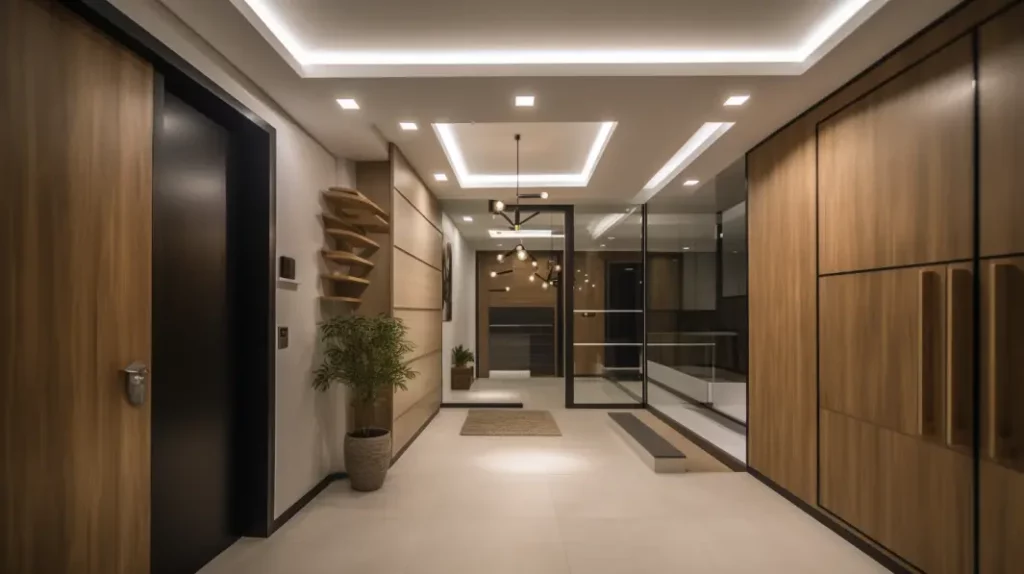
With different types and strength levels of magnetic locks available, it’s important to assess your unique access control requirements when selecting the optimum products.
Factors to Consider
- Number of doors to be secured
- Foot traffic throughput
- Exposure to outdoor conditions
- Integrating with other systems
- Compliance with fire codes
- Aesthetic appearance fitting surroundings
Evaluate present and future scale needs, environmental factors, existing infrastructure, and regulatory standards for your facility. This guides proper magnetic lock sizing and functionality.
Top Magnetic Lock Brands
Industry leaders include:
- Securitron – one of the first magnetic lock patent holders, extensive range
- Schlage – ASSA ABLOY group offering, trusted for 90 years in security
- Dorma – specialty architectural magnetic locks, stylish aesthetics
- Dynalock – leading OEM provider of electromagnetic locks
- Openpath – cloud-based mobile access control with wireless locks
We recommend buying from experienced manufacturers offering advanced software integration and technology capabilities. Beware cheaper generic magnetic locks which may have quality issues or integrity challenges for long-term access control security.
Consult our security experts to determine ideal magnetic lock models for your specific facility. We offer professional guidance and installations nationwide.
Conclusion: The Future of Access Control with Magnetic Locks
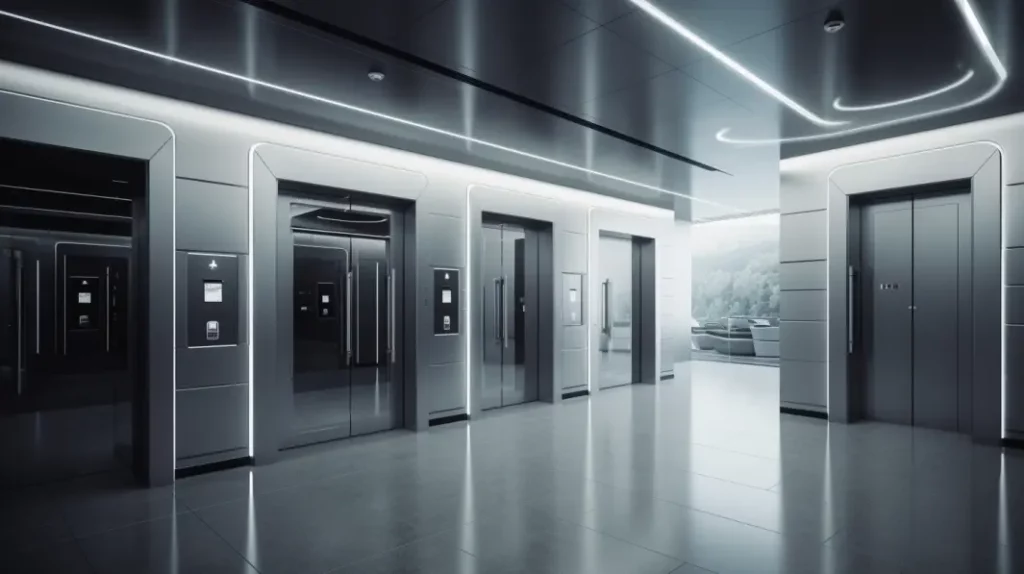
Magnetic locks have rapidly become the gold standard for advanced access control, supplanting antiquated mechanical locks and keys. Facilities worldwide secure sensitive entry points by leveraging electromagnetic, electric strike and shear locks. These offer breakthough capabilities including:
- Seamless integration with IP-based software for granular door control
- Frictionless access via authorized credentials
- Ability to globally manage user permissions and run instant audits
- Enhanced security through encrypted wireless operation
- Mobile credential use eliminating badges, fobs and cards
With exponential advantages, it’s clear why industry leaders predict 90% of access control will involve electronic locking within the next few years. Magnetic locks future-proof facilities for scalability and next generation capabilities.
Ongoing innovation in engineering and software partnerships will enable more possibilities like location based door triggering, facial recognition credential authorization, and AI informed access decisions. Magnetic locks continually upgrade to leverage technologies securing sensitive data centers, bank vaults and defense sites.
However, the convenience and integration that make magnetic locks superior access solutions also pose risks if platforms are compromised. Users must implement cybersecurity best practices including:
- Network segmentation
- Limited data collection/retention
- Multi-factor authentication
- Frequent software patching
- Strict user permission control
- Auditing and monitoring
Adhering to standards like the ASSA ABLOY Opening Solutions CyberSecurity program validates magnetic lock system integrity. This ensureshydroxy facilities fully leverage benefits while minimizing vulnerabilities of electronic access infrastructure as threats relentlessly evolve in today’s digital world.
By pairing magnetic lock installation with managed security services, site managers reap advantages of technological access advancements without needing extensive internal resources to secure platforms. Consult our specialists to implement a magnetic lock system with safety at the forefront – where convenience enables operations rather than hampers security.
Get Professional Guidance
The security experts at Jefferson Security Cameras can help you determine the ideal magnetic lock models for your facility according to scale, aesthetics, integration needs and budget. Consult our team to create a customized access control solution tailored to your operations. Get a Quote for professional magnetic lock supply, installation and support services or call Tel: (267) 662-1423 today. We service clients in Philadelphia and surrounding counties.
FAQs
What are the main types of magnetic locks for access control?
The most common magnetic lock types are electromagnetic locks, electric strikes, magnetic shear locks and eco-friendly magnetic locks. These serve various access control applications based on install environment, power and security level needs.
How do I integrate magnetic locks with my existing access control system?
Leading magnetic lock models offer open architecture connectivity with protocols like OSDP Secure Channel. This allows interfacing card readers, controllers and access management software for centralized monitoring, control and seamless operation.
What features should I look for when buying magnetic locks?
Key buying considerations for magnetic locks include installation method, architectural finishes, holding force, fire egress compliance, tamper protection, connectivity abilities and cybersecurity provisions for networked systems.
Can magnetic locks be unlocked remotely in emergencies?
Yes, integrated access control software enables instantly disabling magnetic locks via mobile device or computer dashboard during emergency events. This allows safe exit when sensors are triggered or first responders must enter secured areas.
How long do commercial-grade magnetic locks typically last?
Properly installed and maintained electromagnetic or electric strike locks from leading security manufacturers typically offer around 10+ years of reliable operation. Higher use in extreme conditions may warrant more frequent replacement.

